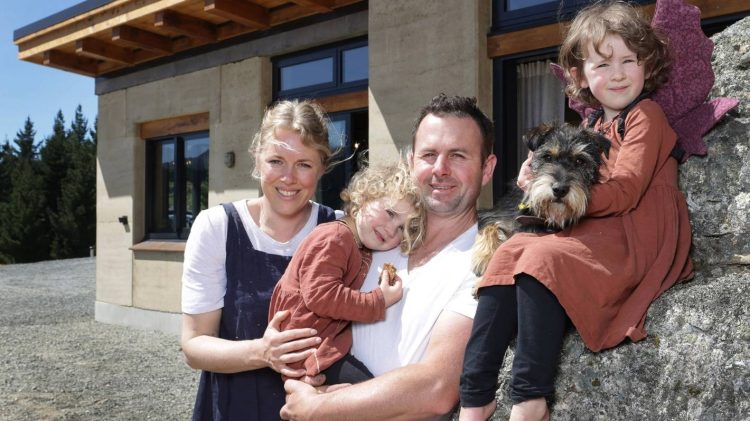Tuần này trên Grand Designs NZ, chúng tôi theo dõi hành trình của một cặp vợ chồng trẻ, Li và Michelle Tane, những người đã chọn sống ngoài mạng lưới ở vùng cao Canterbury hẻo lánh. Trong bảy năm qua, họ đã sống trong một cái lều, một túp lều bùn và hai túp lều gỗ, thậm chí có một đứa con trong thời gian này. Bây giờ, họ đang xây dựng một ngôi nhà trên mảnh đất 50ha của họ, mà họ đã mua với giá 145.000 đô la vào năm 2011.
Li và Michelle có nhiều kỹ năng thực tế giúp họ sống trong môi trường đầy thử thách này. Li là một người trồng cây có kinh nghiệm làm việc tại các trang trại sườn đồi ở Trung Quốc, trong khi Michelle là một người làm vườn. Họ đang xây dựng một ngôi nhà bằng đất đâm bằng gỗ mà họ đã xay trong vài năm qua. Ngôi nhà sẽ nhỏ, chỉ hơn 100m² và họ đặt mục tiêu hoàn thành nó trong vòng một năm với giá 300.000 đô la đến 400.000 đô la.
Cặp đôi tạm thời chuyển đến một ngôi nhà mà họ sở hữu ở Geraldine, cách đó một giờ lái xe, trong khi họ xây dựng ngôi nhà mới của họ. Họ tiếp tục sống đơn giản, hài hòa với thiên nhiên và dường như không bị ảnh hưởng bởi những thách thức phía trước. Họ thậm chí còn tăng cường hệ thống năng lượng mặt trời để cung cấp năng lượng cho các công cụ của họ để xây dựng.
Nguyên liệu thô cho ngôi nhà đất đập đến từ Thung lũng Cardrona, cách đó 300km. Cặp đôi cũng phải điều hướng một con đường tiếp cận đầy thách thức, bao gồm các con sông, để mang vật liệu xây dựng. Bất chấp những thách thức này, họ vẫn lạc quan và quyết tâm.
Ngôi nhà hoàn thiện đơn giản và mạnh mẽ, hoàn hảo cho môi trường khắc nghiệt. Nó có các vật liệu tự nhiên, một nhà bếp bằng gỗ óc chó và các hốc được chạm khắc trên những bức tường đất đâm để đựng sách và thực vật. Cặp đôi cũng chọn đặt một tảng đá lớn bên ngoài phòng khách, chặn phần lớn tầm nhìn ra thung lũng, vì họ yêu thích những tảng đá lớn.
Li và Michelle đã chi khoảng 580.000 đô la cho việc xây dựng, vượt quá ngân sách ban đầu của họ. Tuy nhiên, họ có vẻ cực kỳ hài lòng với ngôi nhà mới và lối sống ngoài lưới của họ. Họ không có internet, mà họ coi là một thứ xa xỉ, không phải là một điều cần thiết. Thay vào đó, họ dành thời gian đọc sách, chơi bài và nghe nhạc. Bất chấp những thách thức, cuộc sống của họ nghe có vẻ bình dị.





























































